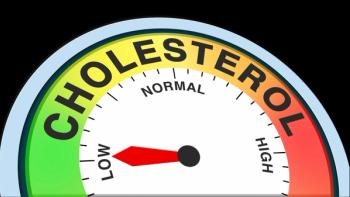
Understanding and Managing Migraines
Migraines can affect patients differently--simple explanations are presented here to help educate patients on causes, diagnosis, prevention, and treatments.
Ms. Terrie is a clinical pharmacy writer based in Haymarket, Virginia.
Migraine headaches affect an estimated 25% to 30% of individuals in the United States. More than two thirds of patients who have migraines are women. Many women experience migraines before or during their menstrual cycle. Migraines can also run in families, and most often occur between 15 and 55 years of age.
Two types of migraines exist—(1) migraine with aura (also known as a classic migraine) and (2) migraine without aura (common migraine). Some people may experience an aura about 30 minutes before the migraine begins. The individual may have disturbances of the senses, such as seeing flashing lights, spots, or jagged lines, have difficulty concentrating, or feel a tingling sensation in the hands, arms, or face. In many cases, though, individuals do not have an aura before a migraine.
The symptoms and severity of migraines affect people differently, and a migraine can last for a few hours or as long as 2 days. The most common symptoms linked with a migraine include a throbbing headache on one side of the head or on both sides of the head. You may even experience nausea and vomiting. Activity, noise, light, or smells may worsen the migraine.
What Can Trigger a Migraine?
Migraine headaches may be triggered by a variety of factors. Examples of these triggers include:
• Stress and anxiety
• Changes in weather, altitude, and/or air pressure
• Hormonal changes (for example, during menstrual cycle, pregnancy, or menopause)
• Environmental factors, such as noise, bright lights, or certain smells
• Changes in sleep or eating patterns (for example, lack of sleep or skipping meals)
• Certain foods, including chocolate, foods that contain tyramine (for example, aged cheeses and meats), foods that contain monosodium glutamate (MSG) or nitrates, foods that are pickled or marinated
• Certain beverages, such as red wine
• Excessive caffeine consumption
• Use of certain medications (for example, nitrates, oral contraceptives, and nifedipine)
How Are Migraines Diagnosed?
If you are having headaches with some of the symptoms mentioned above, or if you have a family history of migraines, your doctor can assess your symptoms and examine you to determine if you are having migraines. Key questions that your doctor may ask include:
• How often do you experience these headaches?
• How long does the headache last?
• Do you experience any other symptoms?
• Do you experience these headaches at certain times?
• Do you have a family history of migraines?
If you are experiencing severe headaches, your doctor may order further testing to rule out other medical conditions as well.
How Are Migraines Treated?
A variety of over-the-counter (OTC) and prescription medications are available to treat and prevent migraines. Treatment for migraines will depend on many factors, including your medical history, allergies to any medications, current medications you are taking, the severity of the headaches, as well as how often you get migraines. You should always consult a pharmacist or doctor about the types of medications available for migraines prior to use, especially if you have a preexisting medical condition, are pregnant, or are currently taking any medications, including prescription drugs, OTC medications, and any vitamin supplements or homeopathic medications. You should always use the medication as directed and take only the recommended amount. It is also important to remember not to use more migraine medication than necessary, because using too much medication can cause headaches to return.
Medications for Migraines:
1. Abortive medications are taken right away once a migraine starts. OTC pain medications, such as aspirin, acetaminophen, ibuprofen, and naproxen, are often used for migraines. Examples of OTC products available for migraines include Excedrin Migraine, which contains aspirin, acetaminophen, and caffeine, and Advil Migraine, which contains ibuprofen. In addition, several prescription medications are available in various forms that include tablets to be swallowed with water, tablets that dissolve, nasal sprays, and injections. One class of prescription medications, referred to as triptans, includes Imitrex, Maxalt, Avert, Frova, Amerge, Zomig, and Relpax. Another class of prescription medications for migraines is the ergot derivatives.
2. Preventive medications are taken every day to prevent migraine attacks that occur again and again. These medications are typically used when an individual has a history of having 2 or more migraines a month. Several classes of prescription medications are used as preventive therapy for migraines. Examples of preventive medications include beta-blockers (for example, propranolol, nadolol), tricyclic antidepressants, anticonvulsants such as valproic acid/ divalproex sodium and topiramate, and the calcium channel blockers such as verapamil and diltiazem.
When Should You Consult Your Physician?
If you experience regular migraine attacks every month, have attacks that do not respond to self-treatment with OTC pain relievers, have attacks that affect your quality of life and/or continue to worsen, you should always consult your doctor for further medical evaluation and treatment. Your doctor can best determine which treatments can help you better manage migraine headaches.
Newsletter
Stay informed on drug updates, treatment guidelines, and pharmacy practice trends—subscribe to Pharmacy Times for weekly clinical insights.


















































































































































































































